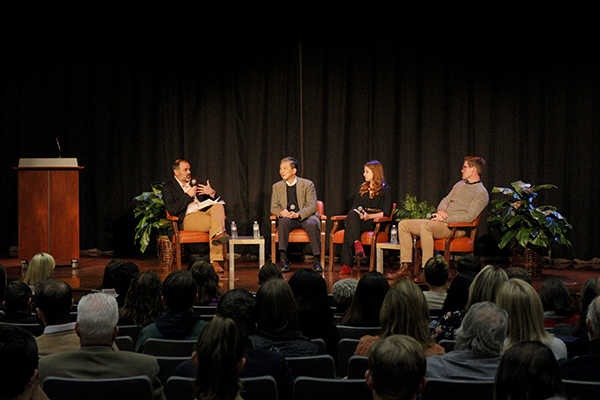As more people take an interest in learning about advances in science, journalists must make that information easy to understand, said science writers on a panel Wednesday.
The Future of Science Communication panel, held in the William C. Powers, Jr. Student Activity Center Auditorium, addressed the recent rise of science in the media and its relationship with journalism. Presented by the College of Natural Sciences and Moody College of Communication, the discussion provided real-life examples of journalists and media professionals that have adapted to changes in digital journalism and scientific research.
According to the College of Natural Sciences website, the panel aimed to foster cross-cutting conversation about science and journalism. Paul Goldbart, dean of the College of Natural Sciences, presented the panel with an introduction on the rise of science and media in American pop culture, noting examples like “The Big Bang Theory” and “Interstellar” that have spread science into mainstream culture.
Loren Grush, science reporter for The Verge, said it is important to make scientific journalism accessible to those without a background in science. She said people are interested in modern science topics, such as the emergence of Elon Musk’s SpaceX, and it is important to make these topics understandable so more people engage with this journalism.
“One of the questions I ask, time and time again, is for (the scientists) to explain (their) research to me like I am five,” Grush said. “If I can understand it, then I have a better time of conveying to the audience or the reader how they’ll be able to understand it.”
Kenneth Chang, science reporter for The New York Times, shared his experiences working in the field for almost 25 years. He said despite his background in science, he asks simple questions that everyone thinks about when reporting.
“Like,‘where did life come from? … How big is the universe?’” Chang said. “Basic, fundamental questions that you don’t have to be a scientist with years of graduate school to appreciate what the question is.”
Joe Hanson, biologist and digital series host, said he has seen an increase in students studying scientific journalism compared to when he was in college. However, he said the actual practice of communicating the topics can be difficult.
“Getting our voice out there and completing this communication endeavor is challenging,” Hanson said. “Trying to take journalistic norms and practices into a wild west of online media is challenging.”





















